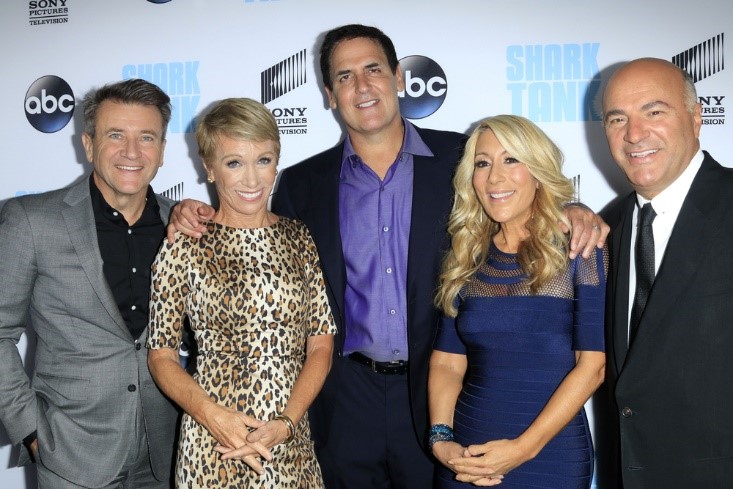“If you win a million dollars in the lottery, you’d best become a millionaire. Because then you get to keep the money.”
– Jim Rohn, motivational speaker and entrepreneur
Few billionaires in the U.S. have a higher public profile than Mark Cuban’s.
Much like President Trump in The Apprentice, Cuban has established a media presence as a host of the ABC reality show Shark Tank. Cuban also owns the NBA’s Dallas Mavericks. And this fellow Pittsburgh native is even considering running for president as a Republican in 2020.
What you may not know is the remarkable story behind how Cuban made – and kept – his first billion-dollar fortune.
Even 20 years later, Cuban’s story offers a terrific lesson on how to protect your own portfolio from the ravages of the next market crash.
Let me explain…
In 1998, Cuban and his partner Todd Wagner sold Broadcast.com to Yahoo for $5.7 billion.
At the time, Cuban received 14.6 million shares of Yahoo, then trading at $95.
With his shares worth $1.4 billion, Cuban became a billionaire overnight.
The internet bubble had minted several other paper billionaires. But after the bubble popped in March 2000, few of them got to keep their newfound wealth. (Even Jeff Bezos watched his wealth evaporate as Amazon’s stock price dropped 95%.)
Mark Cuban was the rare exception.
That’s because he had the foresight to execute one of the most remarkable options trades in financial history.
After selling his company to Yahoo, Cuban must have suspected that Yahoo stock was funny money. (Alas, as part of his deal with Yahoo, Cuban was not allowed to sell his shares immediately.)
So Cuban entered a massive options trade to lock in much of the value of his $1.4 billion stake.
For every 100 shares of Yahoo stock, Cuban bought one put contract (strike $85) and sold one (strike $205). The term of each option was three years.
He bought and sold a total of 146,000 puts and 146,000 calls.
The cost of the puts precisely offset the premium of the calls. This made the trade essentially free.
So how did Cuban’s big bet pan out?
Yahoo’s share price went on to hit $237 by January 2000 – far above the sale price of his $205 call options.
For a while, Cuban’s trade looked like an expensive mistake.
Then the internet bubble burst.
By late 2002, Yahoo had tumbled to a low of $13.
Had he not hedged his position, Cuban would have lost more than 85% of his wealth.
Instead, thanks to his options trade, Cuban managed to keep almost all of it.
As Jim Rohn would say, Cuban didn’t become a billionaire when he sold his company to Yahoo for $1.4 billion.
He became a billionaire when he proved he could keep the money.
Given how prescient Cuban was about preserving his wealth in the dot-com boom, it’s worth exploring how he’s invested today.
Since Cuban’s a private investor, we can’t peek directly into his portfolio.
But one thing is clear. He’s playing it very safe.
Why?
As he recently told CNBC, “There’s no way where you can say, ‘I just trust everything that’s going on.’ And that concerns me.”
Much like Warren Buffett’s strategy, Cuban says, “I’ve got a whole lot of cash on the sidelines. [I’m] ready, willing and able [to invest] if something happens.”
Cuban’s most significant stock holdings are Amazon (Nasdaq: AMZN) and Netflix (Nasdaq: NFLX). He also holds four dividend stocks and two undisclosed shorts.
So how can you adapt Cuban’s approach to your portfolio? (Note that Cuban’s philosophy is a version of the “barbell strategy” I wrote about recently.)
First, allocate 80% of your portfolio to cash or other low-risk investments.
Second, invest 10% in high-beta (volatility) stocks that profit handsomely during the good times. (Think of Cuban’s positions in Amazon and Netflix.)
Finally, allocate the remaining 10% of your funds to buying put options to hedge your portfolio.
If you get your timing right, your puts will explode in value during a market crash.
(Instead of puts, Cuban’s short positions will let him profit from any market downturn.)
The downside to this particular barbell strategy?
It’s not a “buy and hold” or “set it and forget it” approach to managing your investments.
In fact, it requires some sophisticated active management, especially when it comes to buying new puts to replace expired ones.
But here’s the good news…
I’ve identified an exchange-traded fund (ETF) that allows you to implement the put side of this strategy at the click of a mouse.
Granted, this ETF is highly unusual. And it’s certainly not for everyone.
But it does show how creative you can get in managing your money with ETFs.
I’ll be discussing this ETF – and the specifics of its pathbreaking strategy – in detail in my next column.
Good investing,
Nicholas
